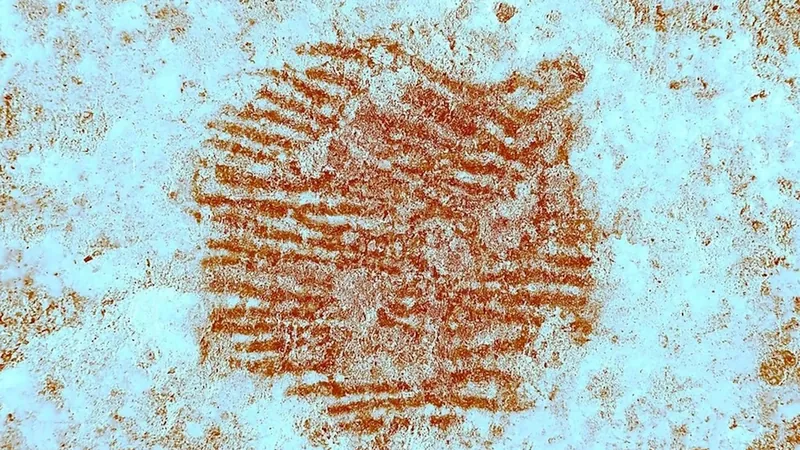
World's Oldest Fingerprint? A Neanderthal's Mark on History!
2025-05-28
Author: Ming
Ancient Discovery Sets Records!
In a groundbreaking discovery in Spain, a striking red dot on a rock is turning heads and rewriting history! This 43,000-year-old fingerprint could be the oldest left by a human ancestor, specifically a Neanderthal, and represents one of Europe’s earliest symbolic artifacts.
The Neanderthal Connection
The mark, crafted using red ocher, is attributed to Neanderthals — our closest extinct relatives. These astonishing beings roamed Europe for hundreds of thousands of years before their extinction around 40,000 years ago. This discovery not only highlights their presence but also challenges the prevailing notion that they were incapable of symbolic art.
A Nose on a Rock?
According to researchers, this red dot may symbolize a nose on a rock face, sparking debate among experts regarding its intended meaning. While Bruce Hardy, an anthropologist, acknowledges the deliberate nature of the mark, he remains skeptical about its symbolic interpretation.
The Big Reveal!
Published in the journal Archaeological and Anthropological Sciences, the study details this intriguing find from the San Lázaro rock shelter in Segovia, Spain. Evidence suggests the area thrived with Neanderthal activity between 44,000 and 41,000 years ago, yet there's no sign that early modern humans ever inhabited it.
Rocky Portraits of Humanity
The rock, resembling a hefty potato, showcases vague eyebrow-like indentations. The researchers argue that this combination, topped with a red dot for a 'nose', transforms the stone into a rudimentary representation of a human face. The National Research Council of Spain hailed this as the most complete and oldest fingerprint evidence, underscoring a Neanderthal's capacity for symbolism.
Art or Accident?
Yet, the debate continues! Scholars like Rebecca Wragg Sykes suggest that the interpretation of the red dot may be misunderstood; it could just as easily represent a navel. The ambiguity fuels the discussion on whether Neanderthals truly embraced abstract art or if this was simply a mark of the mundane.
A Broader Perspective
Archaeologists are divided over Neanderthal artistry. Though there's significant evidence of Neanderthal markings on cave walls dating back tens of thousands of years, the sophistication of these creations pales in comparison to those made by early modern humans. Still, discoveries like these contribute to a growing understanding of Neanderthal cognitive richness.
Eyes of the Beholder
As experts continue to examine this remarkable artifact, the conversation about Neanderthal symbolism and creativity is far from over. Each new discovery offers a glimpse into the lives of these ancient people, reshaping our understanding of early human history.



 Brasil (PT)
Brasil (PT)
 Canada (EN)
Canada (EN)
 Chile (ES)
Chile (ES)
 Česko (CS)
Česko (CS)
 대한민국 (KO)
대한민국 (KO)
 España (ES)
España (ES)
 France (FR)
France (FR)
 Hong Kong (EN)
Hong Kong (EN)
 Italia (IT)
Italia (IT)
 日本 (JA)
日本 (JA)
 Magyarország (HU)
Magyarország (HU)
 Norge (NO)
Norge (NO)
 Polska (PL)
Polska (PL)
 Schweiz (DE)
Schweiz (DE)
 Singapore (EN)
Singapore (EN)
 Sverige (SV)
Sverige (SV)
 Suomi (FI)
Suomi (FI)
 Türkiye (TR)
Türkiye (TR)
 الإمارات العربية المتحدة (AR)
الإمارات العربية المتحدة (AR)